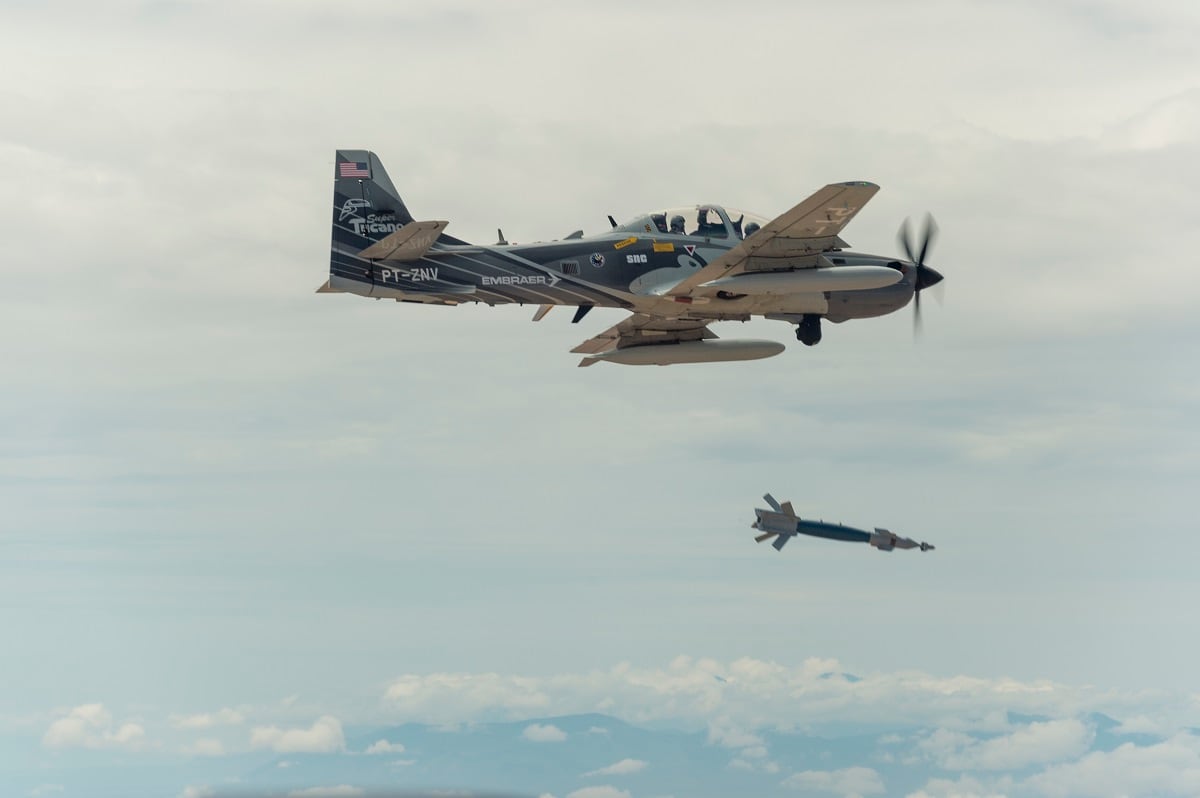The U.S. Air Force this summer is edging closer to the potential procurement of an innovative light-attack aircraft. For the safety of our combat troops and the overall strategic power of our military forces, this addition to our combat capabilities cannot come fast enough.
The recent report on the U.S. service members killed in Niger last October illustrates the current challenge: Our armed forces need to provide nearly continuous combat aircraft support ― in often remote regions of the world ― without wearing out our technologically advanced aircraft needed for near-peer future fights.
For almost 17 years, the Air Force has provided consistent combat-support operations against terrorists by using advanced fourth- and fifth-generation aircraft that are expensive to fly and maintain. Following a recent mission in Afghanistan involving a fifth-generation stealth tactical fighter, a journalist asked: “Is it really necessary to use a plane that costs nearly $70,000 per hour to bomb an undefended drug factory?”
For now, the Air Force relies on high-end, expensive aircraft such as the F-35 and F-22 that should be saved for potential future fights against technologically advanced adversaries. For this other “low end“ fight, the U.S. Air Force needs an aircraft that is inexpensive to operate, easy to maintain, and can work close to the front lines in very rough environments and far from improved infrastructure. Optimally, it needs an OA-X light-attack, survivable, combat-ready, technologically advanced attack and reconnaissance aircraft that will provide our war fighters the combat air cover they need, but at a lower cost.
RELATED

Because time is of the essence and national security is at stake, Air Force leaders have wisely decided that they will not pursue the same old-style, slow procurement process, spending years to determine what is optimal and then taking additional years and many millions of dollars to develop a new aircraft. As Secretary of the Air Force Heather Wilson stated, the nation has to “get capabilities to airmen who need them today and can’t wait two to three years for the normal acquisition process.”
Instead, the Air Force is taking existing, commercially developed, off-the-shelf combat and light-attack reconnaissance aircraft and experimenting with them in real-world conditions. This light-attack experiment is a test to see whether the Air Force can get the capabilities it needs more quickly and efficiently by making use of commercial, off-the-shelf technology.
The cost savings to the nation of deploying these aircraft would be significant: The amount of fuel it takes to keep a light-attack aircraft in the air for an hour with weapons aboard is the amount the F-15E Strike Eagle uses taxiing down the runway in six minutes.
One of the aircraft that is being evaluated — the A-29 Super Tucano ― is built in Jacksonville, Florida. It is already in combat operations in Afghanistan, Lebanon and more than 10 other allied countries around the world.
A U.S. armed forces commander stated that the A-29 combat missions in Afghanistan have been a “game-changer.”
The A-29 should be the clear choice for the Air Force. The A-29 has repeatedly proven itself, flying thousands of combat missions, accruing more than 300,000 flying hours, 40,000 of those in combat, employing weapons ― including laser-guided bombs ― against Taliban fighters and other terrorist groups. Since the A-29 is in production in Florida today for our allies, it would require little time to deploy for U.S. troops.
I support the Air Force in its innovative effort to get our war fighters what they require to succeed. This light-attack program offers a solution that protects our troops, defeats our enemies and saves our technologically advanced aircraft for the fight for which they are built.
If the Air Force wants to save money — and lives — by quickly deploying a low-cost, combat-proven aircraft that is more cost-effective against terrorists and militants than our high-end aircraft, then we should expedite the light-attack experiment and acquire the A-29 as expeditiously as possible.
Rep. John Rutherford, R-Fla., sits on the House Judiciary Committee and the House Appropriations Committee where he serves on three subcommittees: Transportation, Housing and Urban Development; Legislative Branch; and State and Foreign Operations.




